In this in-depth review we take a look at Sony’s compact FE 24mm F2.8 G lens for full-frame mirrorless cameras like the Sony a7C.

Table of Contents[Hide][Show]
Introduction
24mm is a well-liked wide angle focal length, with lenses proposed by Sigma, Tamron, Rokinon and Sony. Recently, all of these manufacturers introduced 24mm lenses with moderately fast apertures (F2.8, except for Sigma’s F3.5) but with small, high-quality bodies, intended to be carried anywhere. Some, like Sony and Tamron’s lenses, are even weather resistant for an even higher level of confidence. These 24mm lenses (and their siblings with comparable focal lengths) offer, on paper, better capabilities than zooms, while remaining compact and lightweight.

The Sony 24mm is part of a trio of lenses, including a 40mm F2.5 and a 50mm F2.5, all with identical body sizes and almost identical weight. These lenses are intended for users looking for lightweight primes, but also for vloggers and users of gimbals, who will enjoy not having to recalibrate their equipment when changing lenses. Sony already had an F1.4 version of the 24mm lens, but it is much larger, heavier, and more expensive.
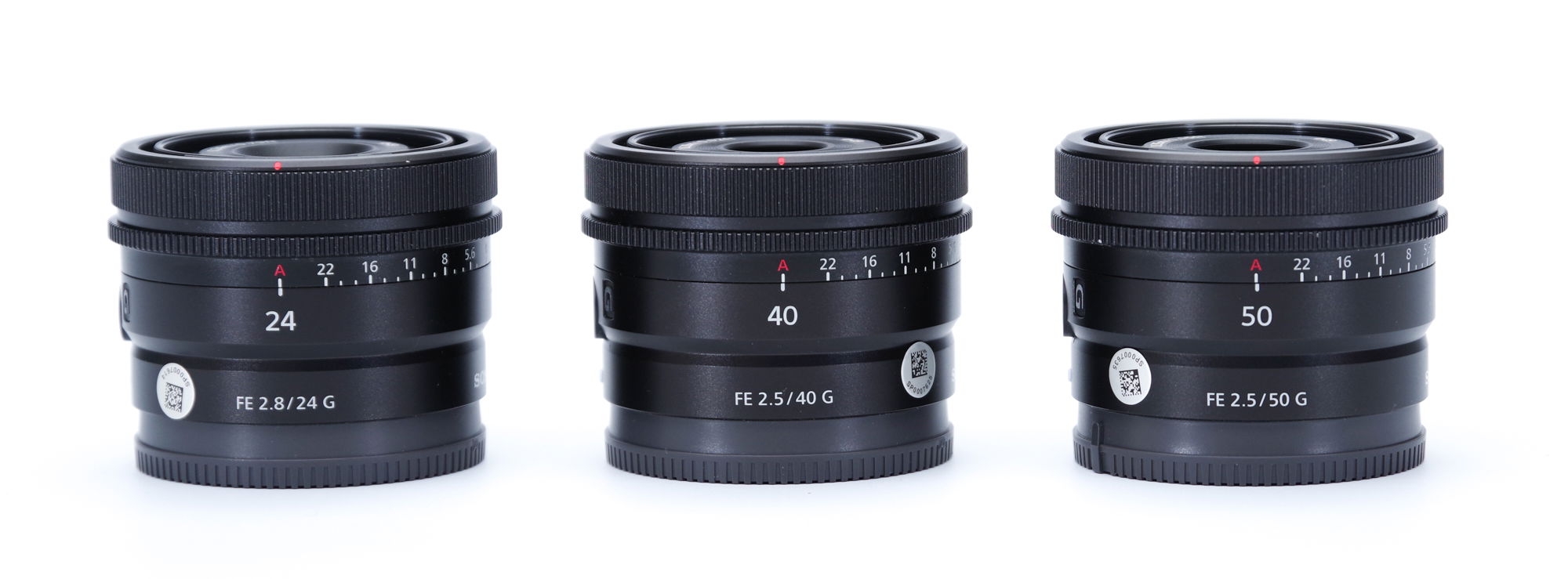
In this in-depth review, we will take a look at all the technical and artistic parameters which help to define a lens. Read on to find out everything there is to know about the Sony FE 24mm F2.8 G!
Specifications
| Lens Name | FE 24 mm F2.8 G (Model SEL24F28G) |
| Optical formula | 8 elements in 7 groups |
| Image circle | Full frame |
| Field of view diagonal | FF: 84° APS-C: 62° |
| Aperture range | F2.8/F22 |
| Aperture blades | 7, curved |
| Aperture ring | Yes |
| Max magnification | 0.13x (AF), expands to 0.19X (MF) |
| Minimum focus distance | 240mm (AF), expands to 180mm (MF) |
| Internal focus | Yes |
| Filter thread diameter | 49mm |
| Lens cap | Plastic, clip-on |
| Lens hood | Removable cylinder |
| Diameter x Length | 68 x 45 mm (2.75 x 1.8 in) |
| Weight | 162 g (5.8 oz) |
| Price (US MSRP) | $598 |
Construction and Handling
In this section, we take a look at the physical characteristics of the Sony 24mm F2.8.
Front Element
The front of the lens bears its name, minimum focus distance and filter diameter. The glass takes up a relatively small part of the total front surface.

The lens uses a small 49mm filter thread. This diameter is shared with its siblings the 40mm and 50mm. It makes it easy to use a single set of filters for several lenses.
The lens cap is plastic.
Lens Body
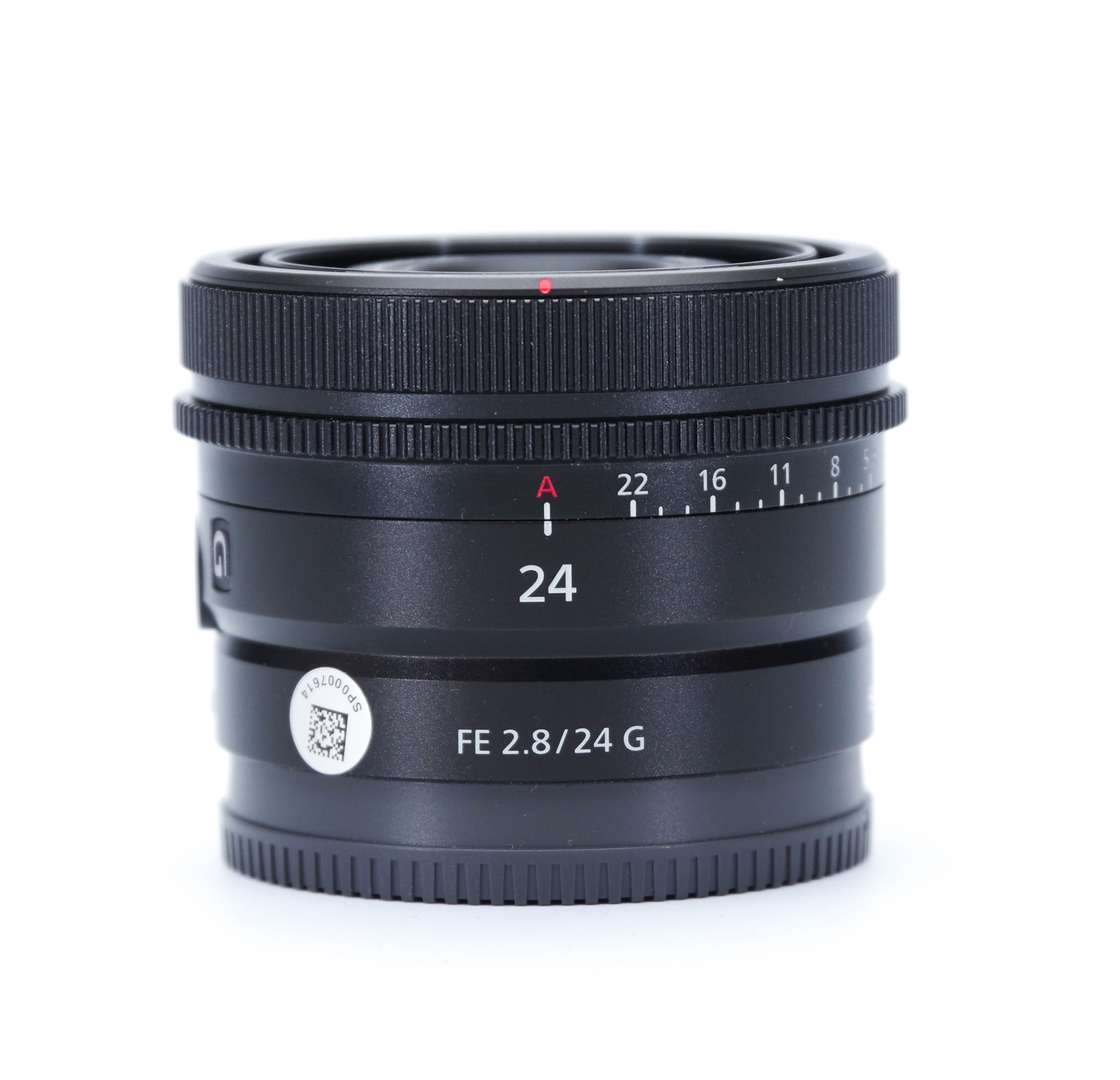
The Sony 24mm has a small body with a surprising amount of features and controls. It is also extremely light weight, despite being made of metal.
The bottom of the body, near the camera mount, the lens name and alignment dot. This dot protrudes for easier alignment.
Higher up is a section dense with features. In the center, bold lettering states for focal length (to distinguish it from the similar 40mm and 50mm). To the right is a switch allowing the user to de-click the aperture ring.

To the left is the customizable focus hold button, as well as an AF/MF switch. Next to those is the G label, denoting (on paper) a higher level of quality than more consumer-oriented lenses.
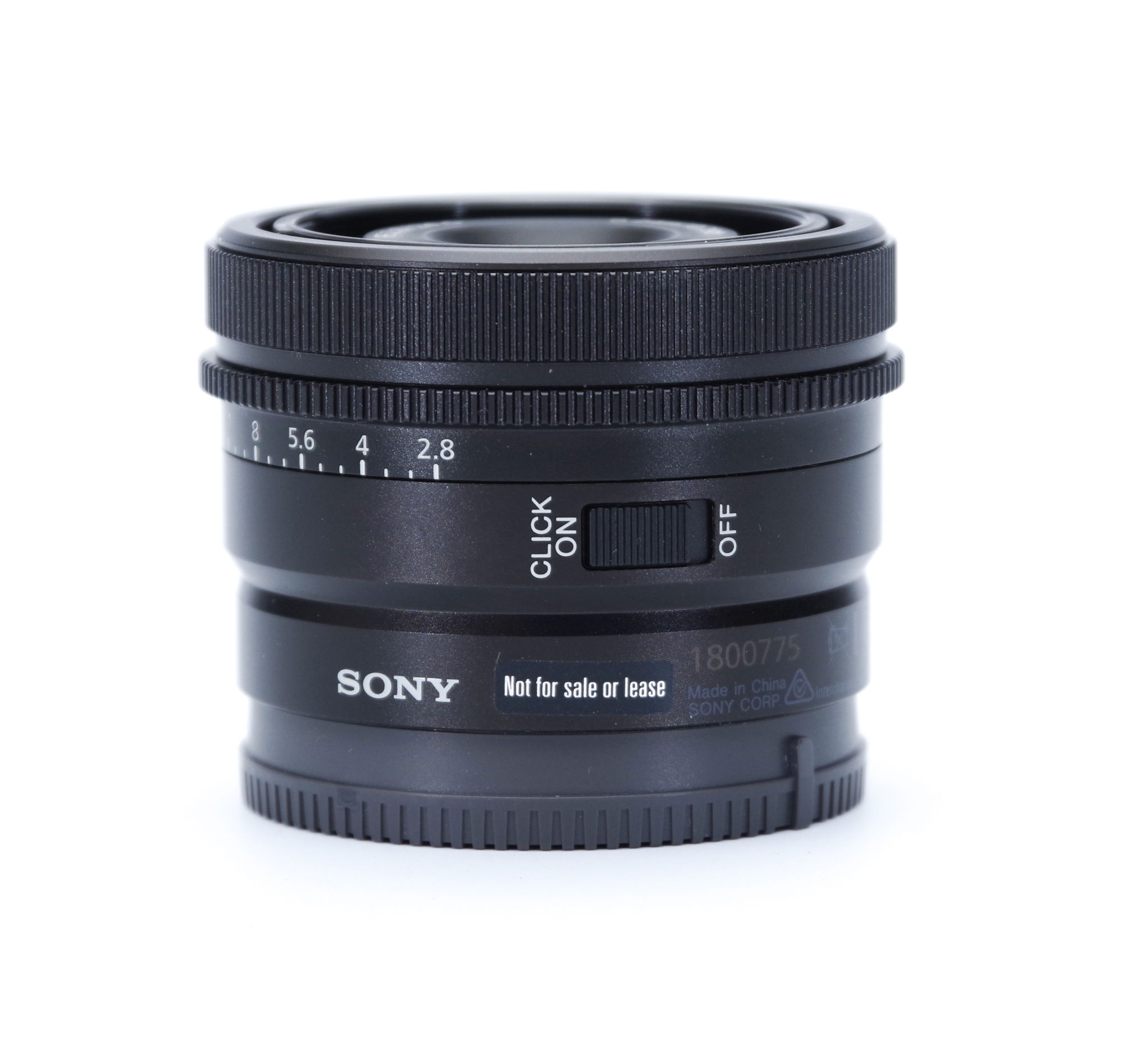
On the opposite side is a switch to “de-click” the aperture ring, a feature desirable for videographers.
Next is the aperture ring. The ring is ribbed and easy to find, but narrow. There is an A (automatic) position to allow aperture control to be performed by the camera, and aperture values selectable in 1/3 steps increments.
In P and auto modes, the aperture ring does nothing. It serves in A and M modes. One thing to note is that the ring has no lock, and will often rotate with a little friction, for instance when inserting in a camera bag or just when mounting/unmounting the lens. Users will need to be careful not to move the ring unwillingly.
The last element, towards the front, is the focus ring. Wider than the aperture ring, is has an adequate, but by no means remarkable, level of friction.
The lens does not extend when focusing.

The lens is fully sealed against dust and moisture.
Aperture
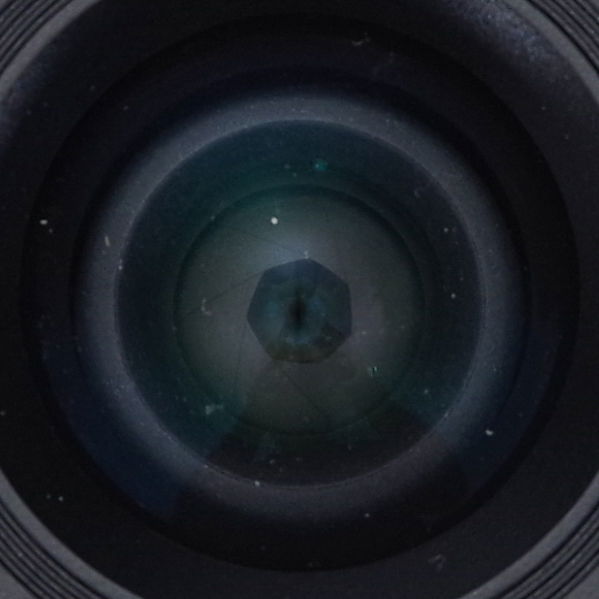
The Sony 24mm uses 7 curved aperture blades. As can be seen above, the curvature is moderate.
Lens Mount

The lens mount is metal, and features a thin black o-ring to protect against water ingress. There is a cut-out on the back, to diminish stray reflections. To some extent, it serves a function akin to a lens hood.
Lens hood
The lens ships with a metal lens hood. It has a cylindrical shape and reverses for storage. Sadly, it completely covers the rings when reversed.
Mounted On Camera
The Sony 24mm looks right at home on the Sony A7C, for which it is an excellent match.
Side by side
Here is the Sony 24mm next to Sony’s FE 28-60mm and the Tamron 20mm, an lens with comparable specs (and identical in size) to Tamron’s 24mm F2.8). It is an excellent match for the A7C’s kit lens, this similarity is probably intentional. It is dwarfed by the Tamron, which is often regarded as a compact lens.
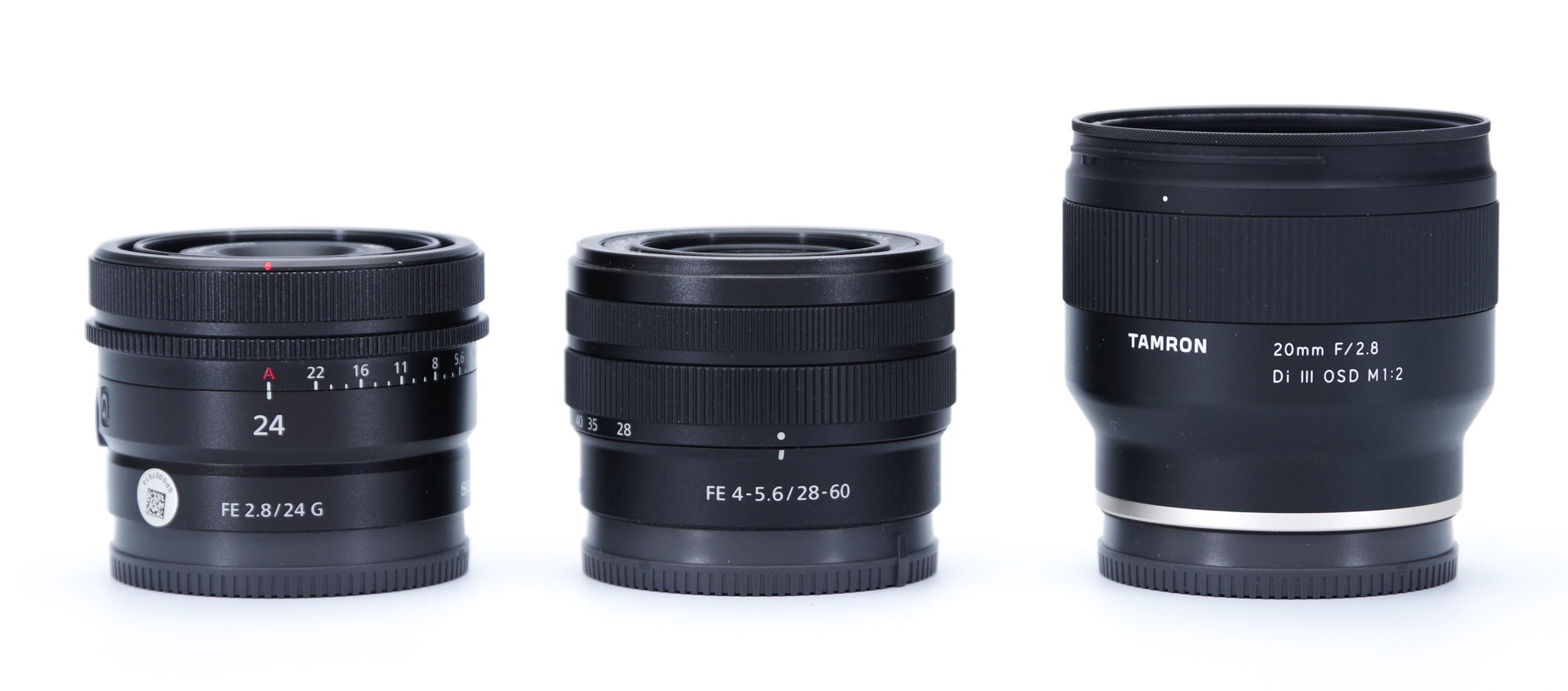
Focusing
The Sony 24mm F2.8 G uses no less han two linear motors to provide fast and precise AF. In particular, tracking is supposed to be enhanced.
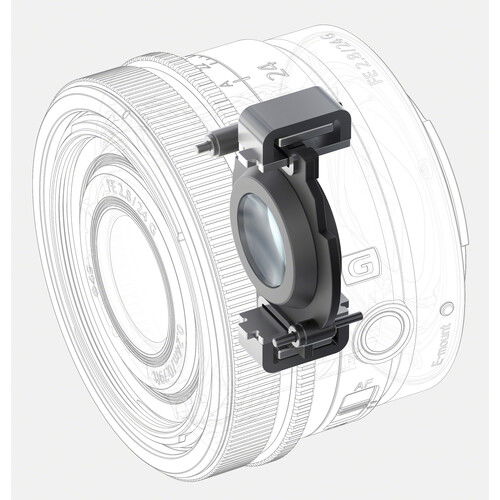
In use, the Sony 24mm gives confidence in its focusing capabilities. The lens is almost completely silent.
Focusing feels very fast, responsive and reliable. The silent AF enhances this impression. The 24mm keeps up easily with subject tracking using AF-C. It supports every focusing mode available on the A7C.
There is a focus hold button, and an AF/MF switch on the lens. The switch is low on the lens barrel, making it harder to find at times. The focus ring is correctly dampened and shouldn’t move accidentally. It also gives adequate feedback to the user, not particularly pleasing, but accurate. The precision of the focus adjustments will be dictated by the speed of rotation of the focus ring. Sony did a good job even though focus-by-wire is not as direct as mechanical focusing.
We observed no occurrences of hunting during our tests, but some misfocuses in low light.
AF Speed
AF speed was tested with the A7C. The subject was a black cross on a white background, about 1.5 meters in front of the camera. We used the central focus point. Three measurements were averaged for each data point.
For reference, 5 EV corresponds roughly to a small room lit with a 60 W bulb, a sunny day corresponds to 16 EV, and a moonlit night to -2 EV.

Even in low light, the Sony 24mm F2.8 G is fast and reliable. Around 0.8 seconds is a pretty good result. When light levels increase, AF becomes almost instant in our test, so quick it is hard to measure. Note that actual AF speed varies with the subject distance and conditions.
AF Tracking
AF tracking, or continuous AF, is a hallmark of Sony cameras. As such, it is important to evaluate whether or not the Sony 24mm can keep up with fast movements of the subject.
In our experience, the lens performs very well in this regard, well within expectations. Once focus is locked, the camera keeps up with most subject movements. We rarely never encountered occurrences when the camera would lose its focus lock once achieved except at close distances.
The following animation shows a series of 22 images, and involves movement towards the photographer, followed by a rotation. The last image is the only one out of focus. The subject was still farther away than the minimum distance.

General Image Quality
Before diving into the technical aspects of this review, let’s have a look at the more subjective elements which can make or break an image.
Field of View
24mm is a popular focal length, wide without going extreme. It will couple well with many zooms, many of whom start their range at 28mm, or other primes. Many users prefer this focal length to the wider 18mm or 20mm.
Landscapes and cityscapes are obvious applications for such a lens. The moderately fast aperture is a good match for night photography; as seen on the image below showing Jupiter, Saturn and the Milky Way, this focal length lets the user capture beautiful starry skies, with well-controlled distortion and aberrations.

24mm will also be well liked by vloggers who want a wide angle lens, without the distortion and perspective effects of an ultra-wide lens.
The Sony 24mm F2.8 lacks any true close focusing capabilities. That is one limitation of this lens, especially when compared with the Tamron 24mm F2.8.
Color and Contrast
The images produced by the Sony 24mm F2.8 G are pleasing, with well-toned images, nicely saturated without going overboard. The rendering is fairly neutral, but with good tonal range.
Starbursts
Starbursts are not particularly impressive. Below F8 there is nothing to see and, even at that value, what rays we observe are diffuse. Even at F11 and beyond, the starbursts are never particularly remarkable. Users should not use this lens with the intent to create starbursts.
Metering and Exposure
Exposure was mostly consistent and reliable. We observed some rare occurrences of underexposure, but these were not frequent.
Sharpness
Sharpness, or a lens’s ability to resolve small details, is far from the only important characteristic of a lens, but it is probably the one which many users look at first. Soft images distract the viewer and the sharpest point in an image draws the eye of the viewer.
There are several ways to measure resolution. Some are quantitative, such as the number of lines per millimeter that can be resolved, while others are comparative, such as using a standardized scene to pit lenses against one another. We will use the latter, and supplement it with real-life samples.
To evaluate sharpness, we use a standard test chart that can be used to compare lenses to one another. We place the camera and lenses at a distance of 100x the focal length, so that the chart occupies the same area on all test images. This results in distances of 2.4 m in the present case. The chart is positioned successively in the center, on the edge and corner off the frame, testing all apertures each time. Focus is repeated for each position to avoid field curvature contributions.
This test will not show how good a lens can be. Quite the contrary, it is a stress test to illustrate the limits of a lens’s capabilities.
Resolution is of course sensor-relevant. For this test we use the A7C camera’s 24 MP sensor.
Test results at 24mm
The following images illustrate the results at all apertures at 24mm.
| Center | Edge | Corner | |
| F2.8 | 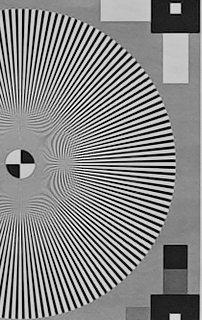 | 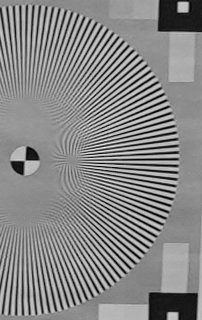 | 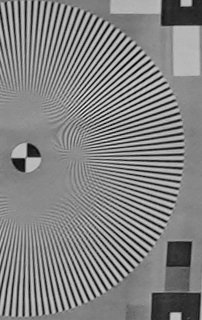 |
| F4 |  |  | 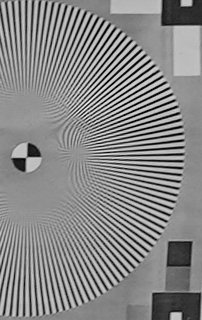 |
| F5.6 | 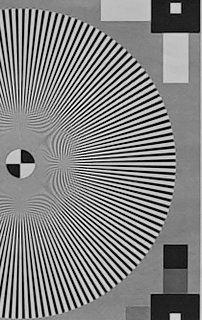 | 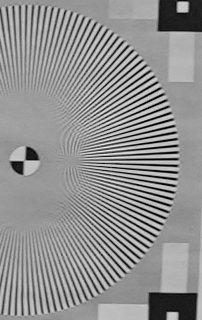 | 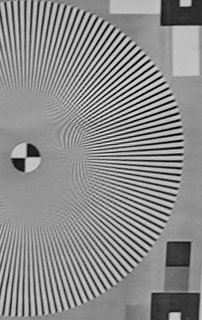 |
| F8 |  |  |  |
| F11 |  | 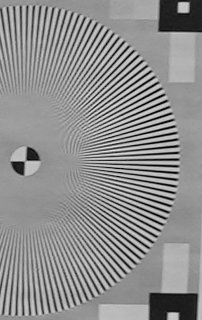 |  |
| F16 |  |  |  |
| F22 | 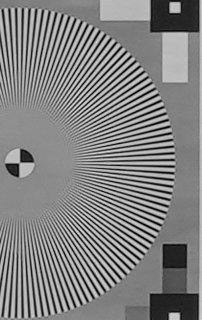 | 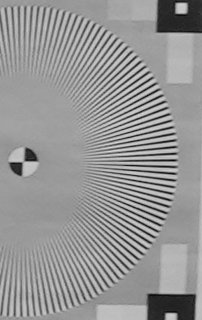 | 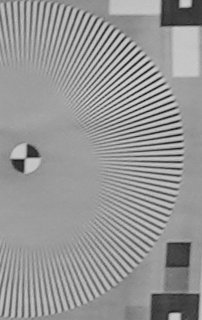 |
These results illustrate the Sony 24mm’s capabilities and limitations.
In the center, the results are good wide open, and reach excellent levels between F5.6 and F11. F16 remains usable, while F22 can serve in a pinch, but shows decreased resolution.
Edges are not as good as the center. The difference is more obvious at wider apertures, but exists throughout the range. Best results are obtained at medium to wide values, between F5.6 and F8.
Corners are comparable with the edges, with even lower sharpness. At no point do they reach similar resolution figures as the center.
This is a bit of a letdown, as wide angle lenses often are used in situations where edge-to-edge sharpness is desired. The center certainly meets expectations, but the edges and corners do not really. Note that, in use, the discrepancies between the edges and center will not always materialize, in particular because the “center” section expands to a large part of the frame.
The images below show the level of sharpness attainable when using close focusing.
Summary
Excellent center sharpness, but uniformity is worse than expected. Users expecting tack-sharp results across the whole frame will not be satisfied.
Vignetting
Vignetting, or the darkening of corners at wider apertures, is both a defect and a feature, as it can be used creatively to put emphasis on subjects closer to the center, create a mood or a vintage look. It can also be corrected automatically by modern cameras so is less of a problem than in the past. That is only true for lenses with electronic contacts, including the Tamron 24mm.
The following chart illustrates the vignetting of the lens for full frame when left uncorrected.
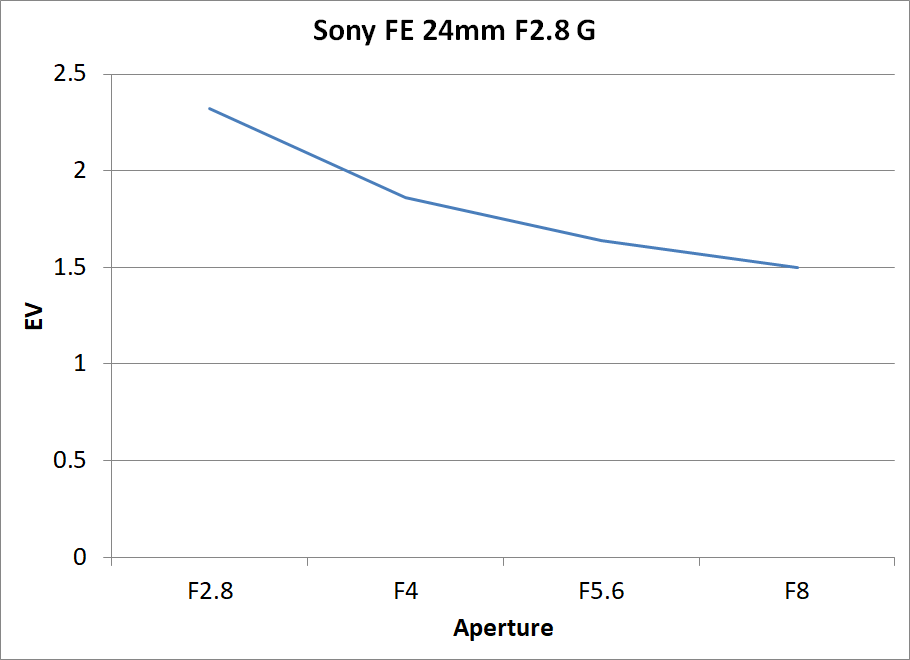
The Sony 24mm’s designer visibly decided to rely on automated corrections for vignetting. This is not surprising but certainly something to be aware of. Wide open, vignetting is strong and will be visible in most scenes. Closing down brings the effect lower, but still above 1.5 EV, remaining easily noticeable. We recommend using automatic correction profiles to avoid the effect.
Note that, when using JPEGs, the camera does not allow disabling of the automatic corrections. It seems the designers were aware of the strong vignetting created by the Sony 24mm.
The images below show the lens’s vignetting at varying apertures.
| Full frame 24mm | |
| F2.8 |  |
| F4 |  |
| F5.6 | 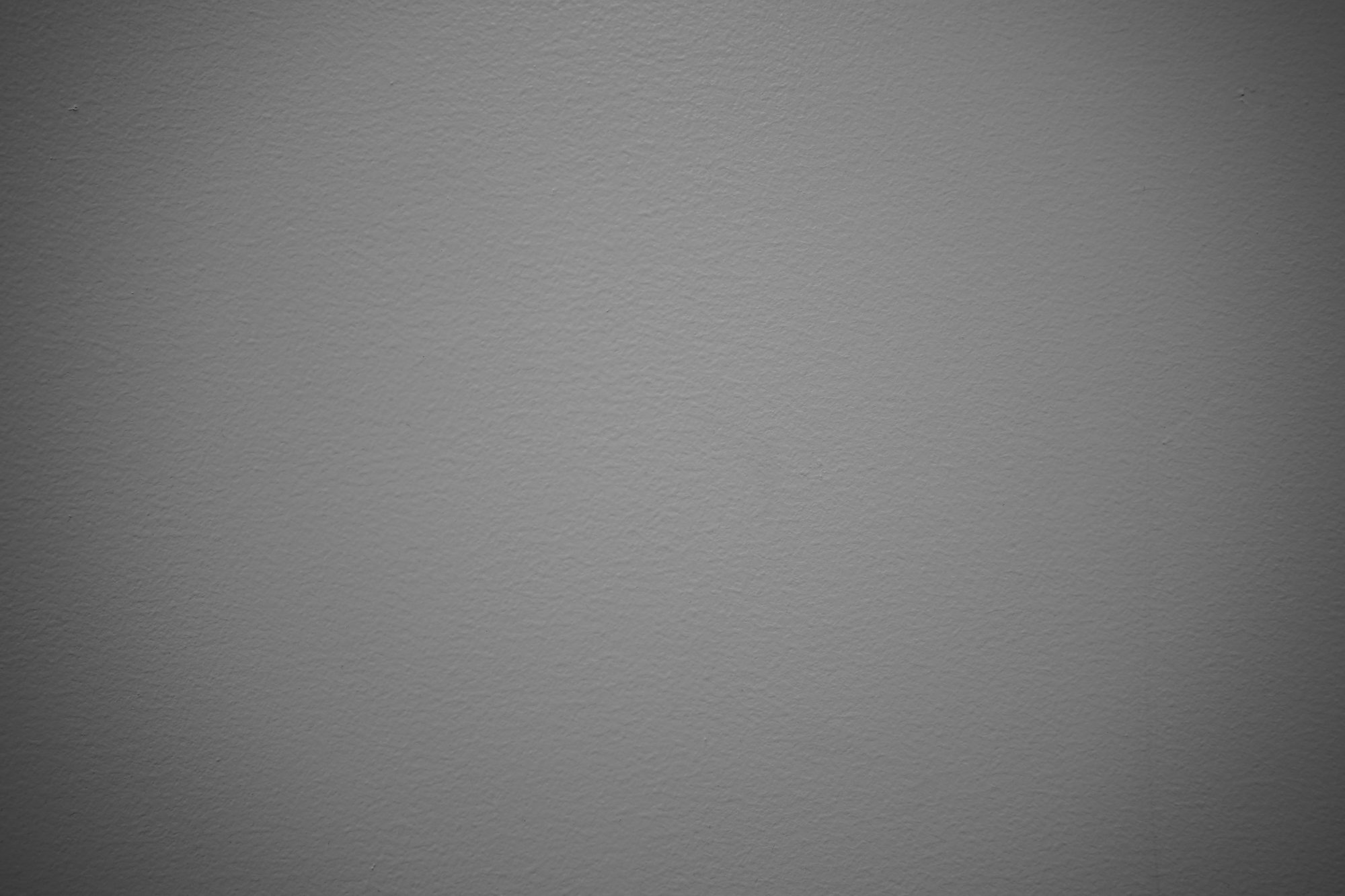 |
| F8 |  |
| F11 |  |
| F16 |  |
Bokeh
Bokeh is a Japanese term describing the quality of the background blur. It does not relate to the depth of field but to the areas in the image that are beyond the range that is expected to be in focus.
Bokeh is highly subjective. In general, a smooth bokeh with blurred shapes and contours is generally perceived as being of a higher quality. A shallow depth of field does not always equate a more pleasing bokeh.
To evaluate the characteristics of the background blur, we took pictures at varying apertures, using a scene with a lot of detail and bright highlights. The following images show the results.
| F2.8 |  |
| F4 |  |
| F5.6 |  |
| F8 | 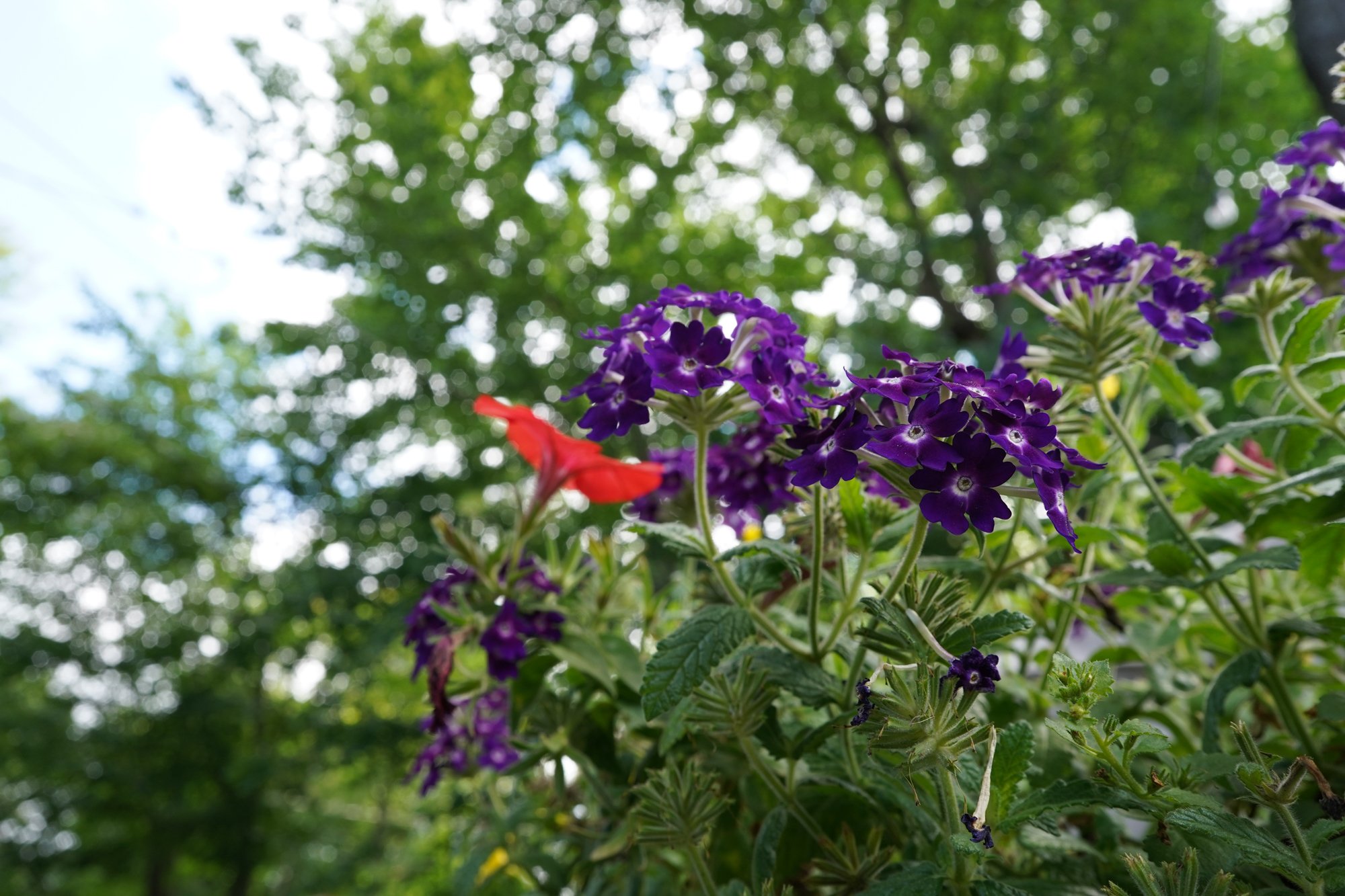 |
| F11 |  |
| F16 | 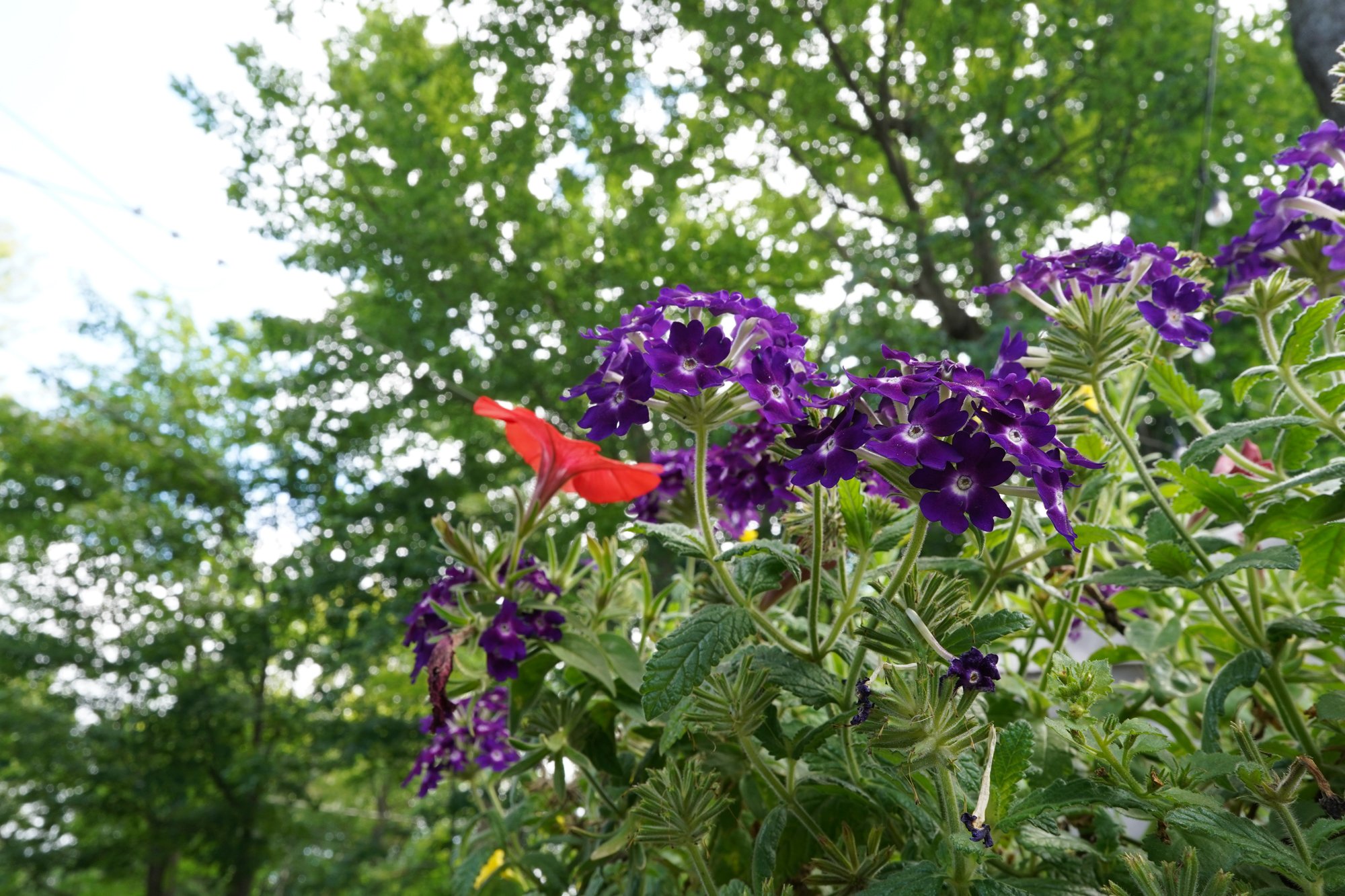 |
| F22 | 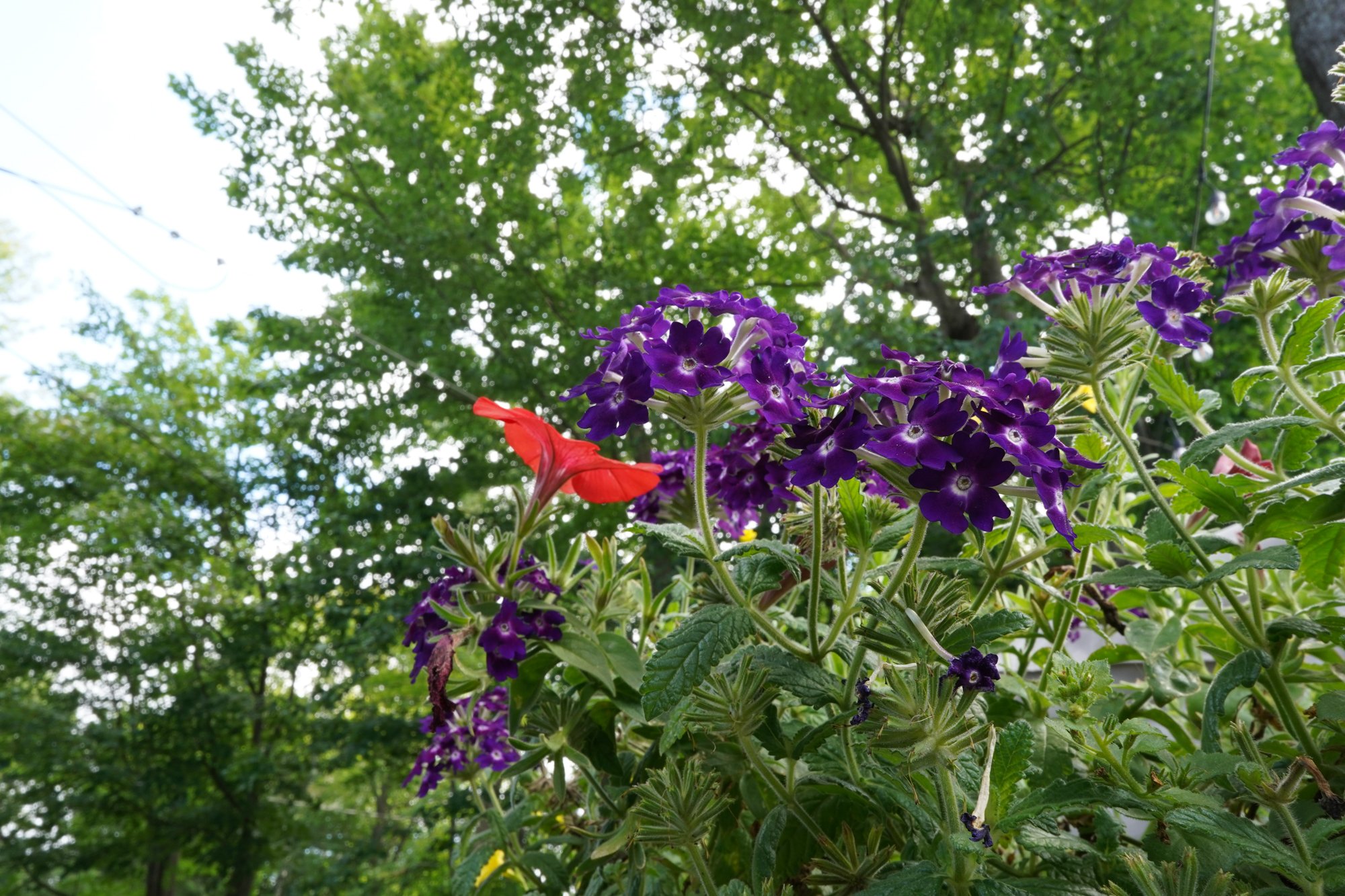 |
Thanks to the F2.8 maximum aperture, depth of field can be made very shallow. Subject isolation is easy and transitions between in-focus and out-of-focus are gradual and pleasing. In this the Sony 24mm does very well indeed.
Highlights are circular at F2.8. The background blur is still busier than ideal, not dramatic but not perfect. Highlights in the corners are elongated, while those in the center remain circular.
Closing the aperture, even by one stop, gives more shape to the highlights. They do not remain circular despite the curved aperture blades. The shape is far from distracting, but surprising as we would expect the circular shape to remain visible until smaller apertures.
Flare and Ghosting
Flare is a decrease in contrast caused by reflections on internal lens elements. Ghosting is the appearance of orb-shaped artifacts in an image containing a light source, caused by the same internal reflections. High-quality coatings reduce the importance of flare and ghosting in an image.
We test flare and ghosting by taking pictures of a bright light source positioned at the center and on an edge of the frame, at varying apertures.
Test results at 24mm
| Center | Corner | |
| F2.8 | 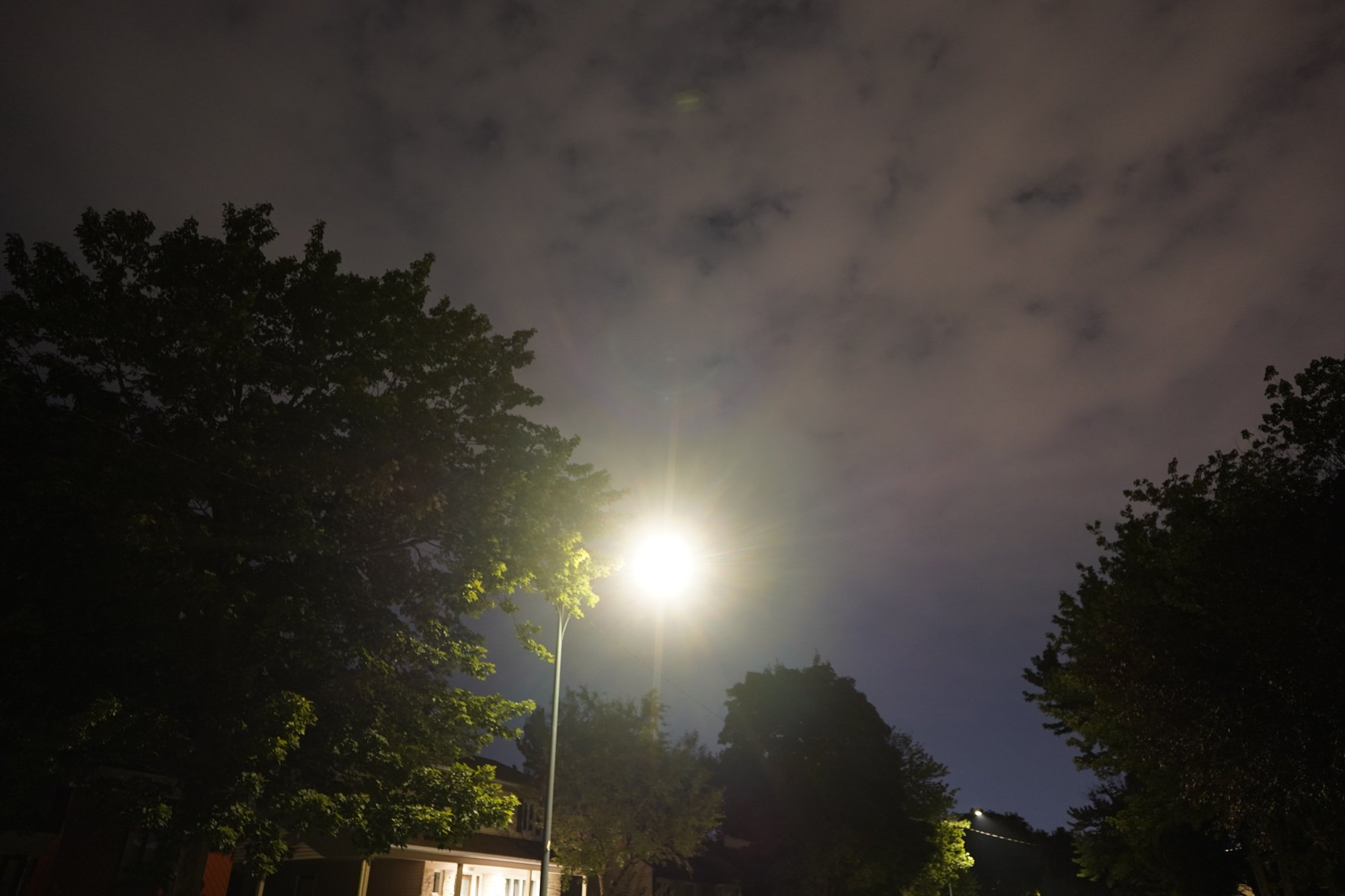 | 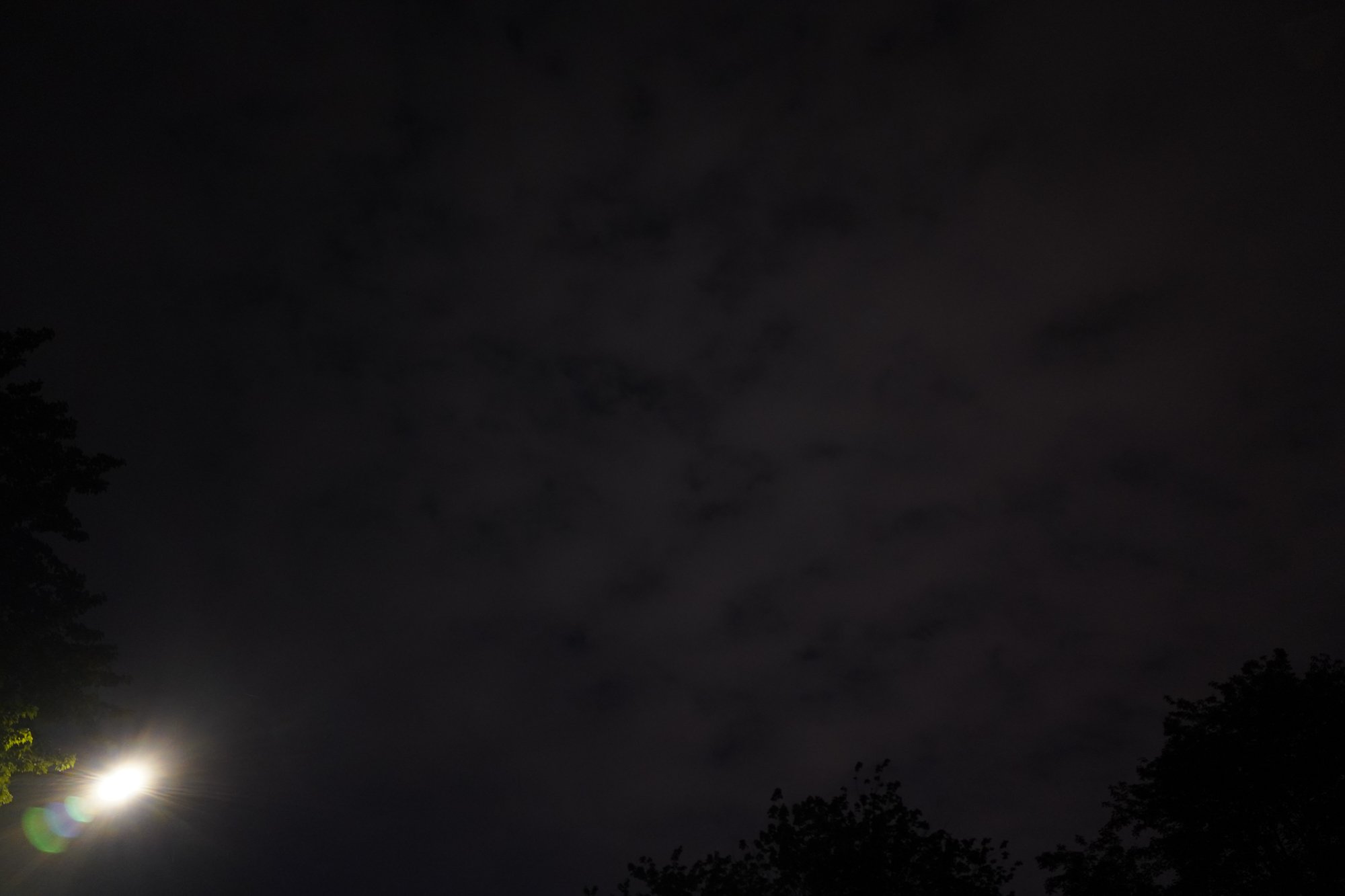 |
| F4 | 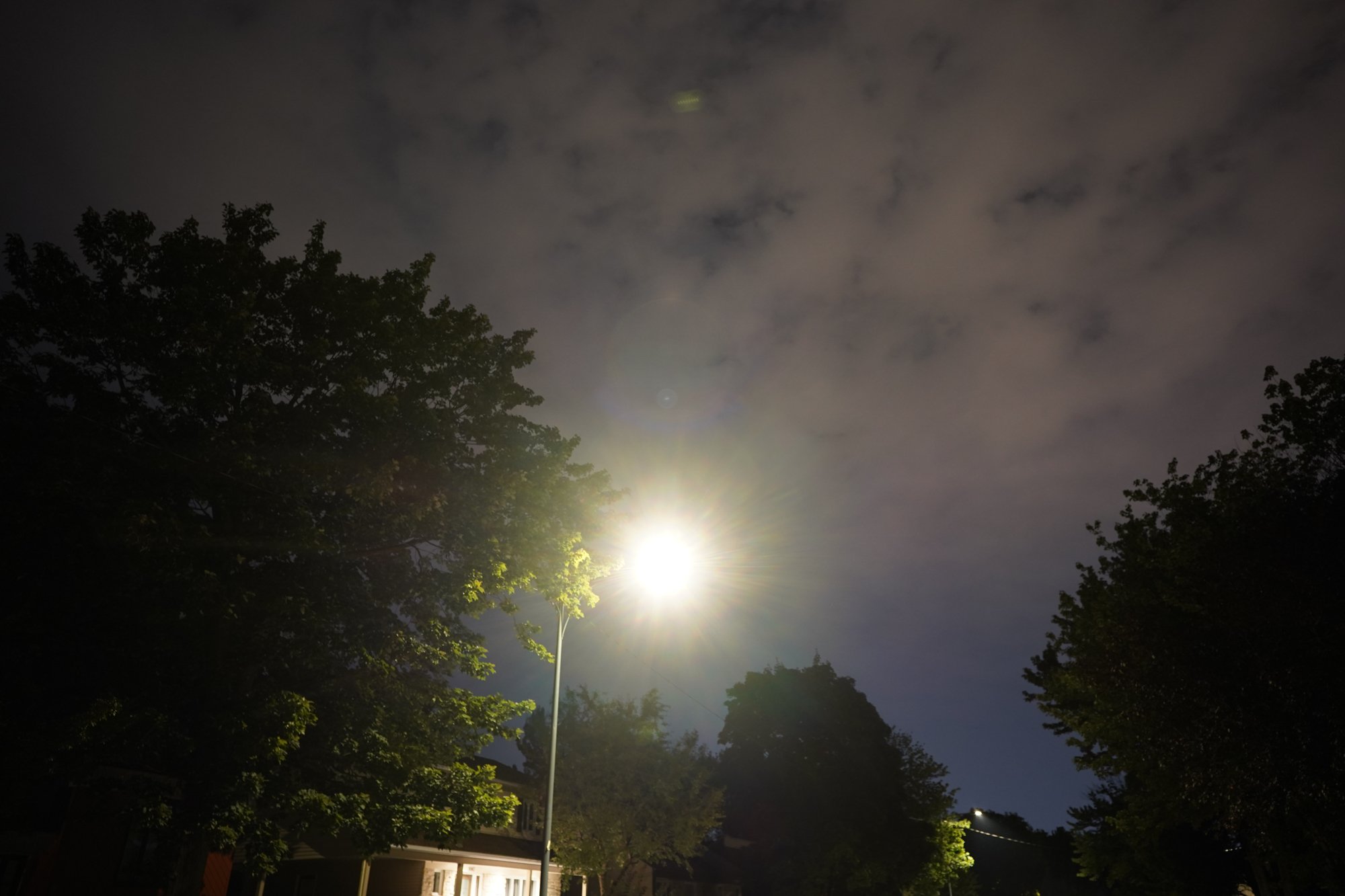 |  |
| F5.6 |  | 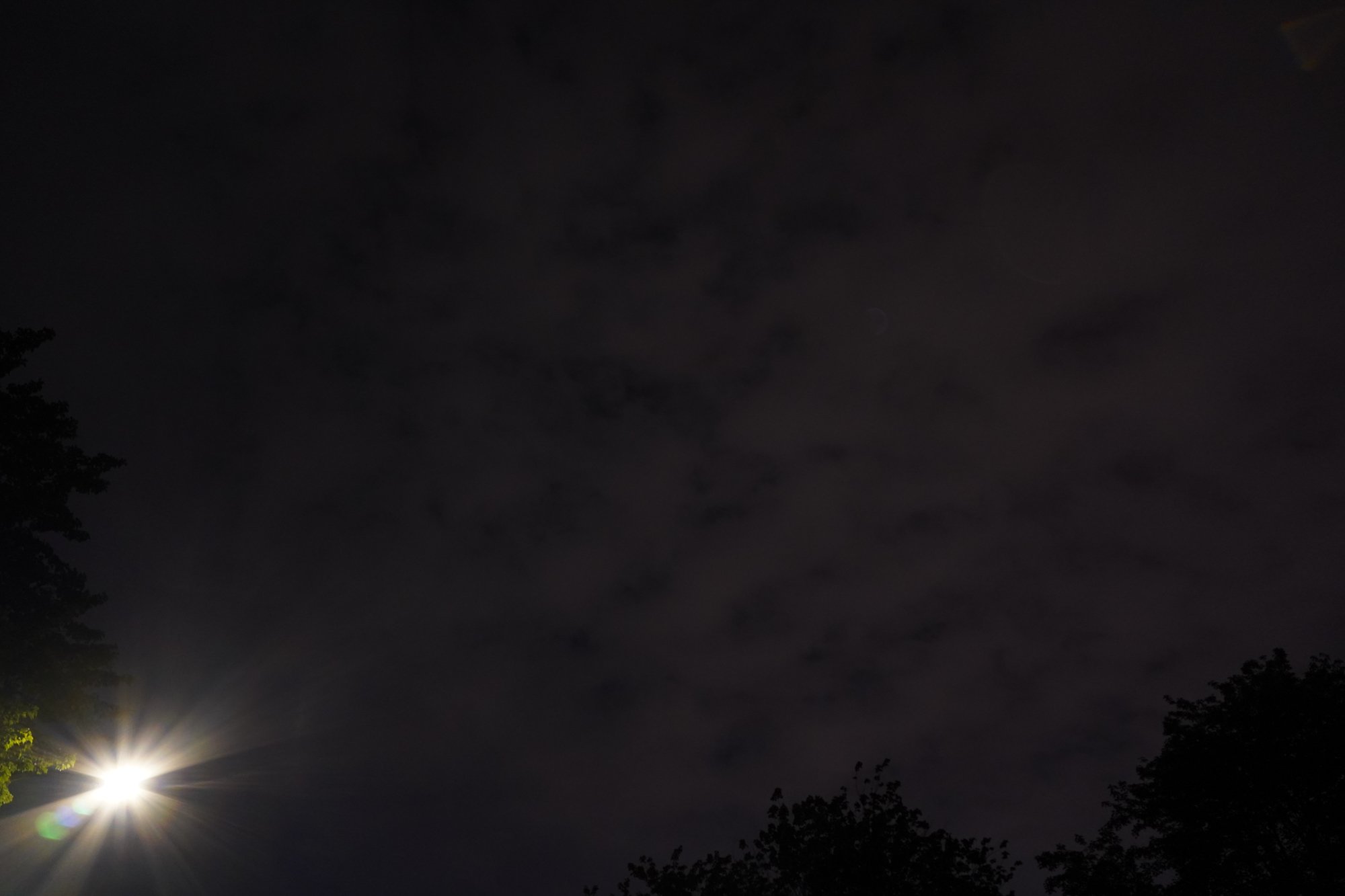 |
| F8 | 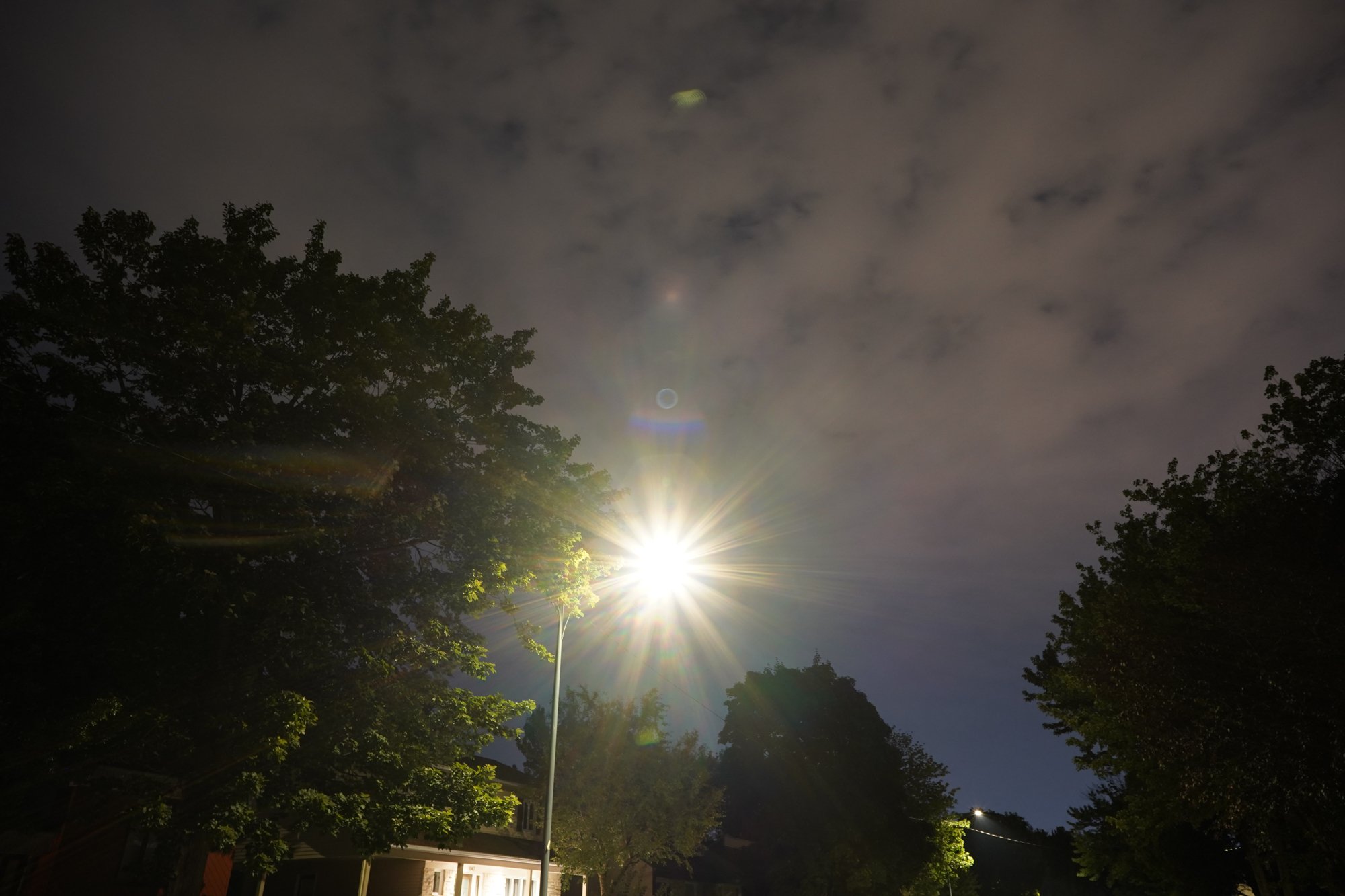 |  |
| F11 |  | 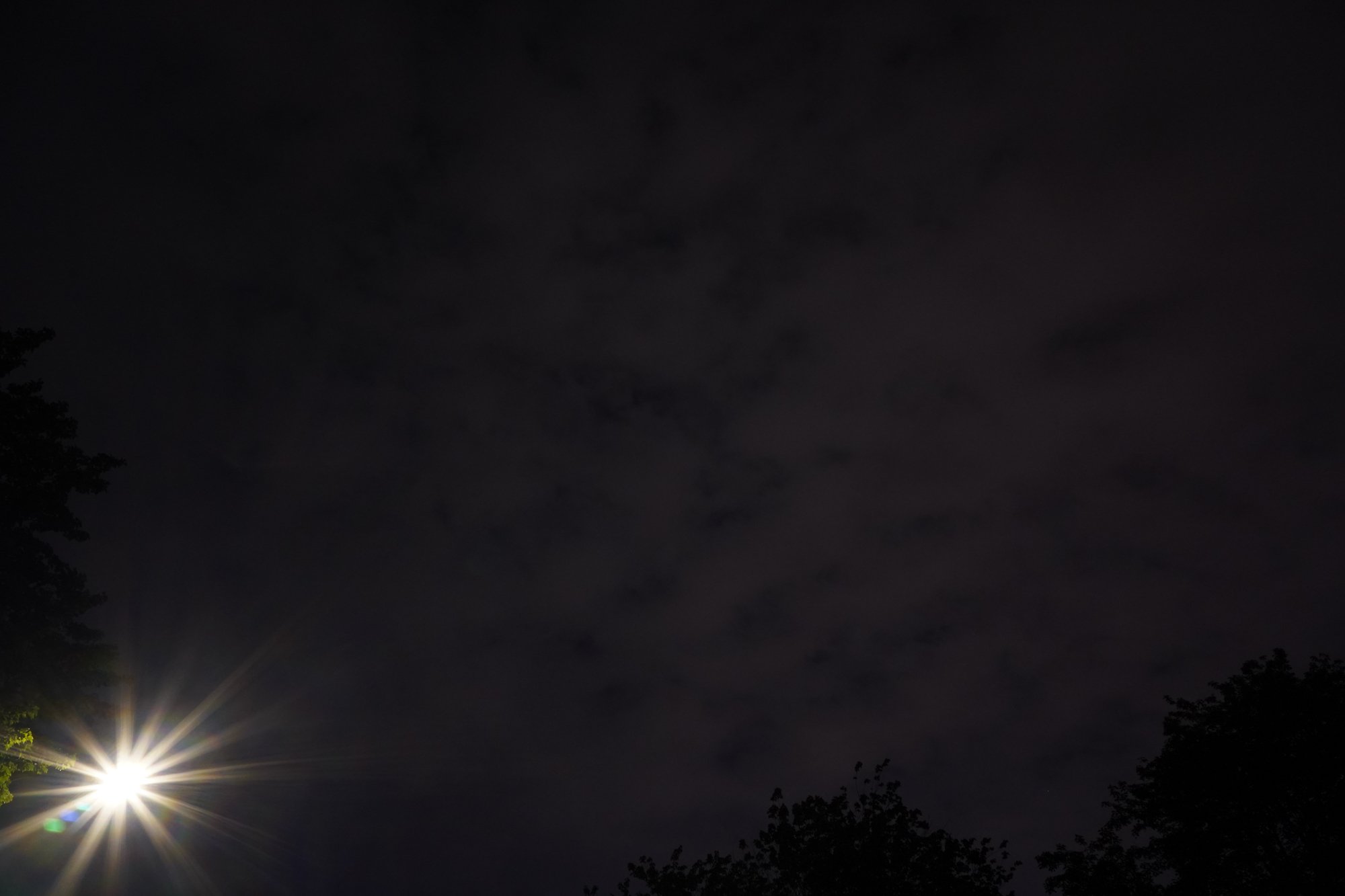 |
| F16 | 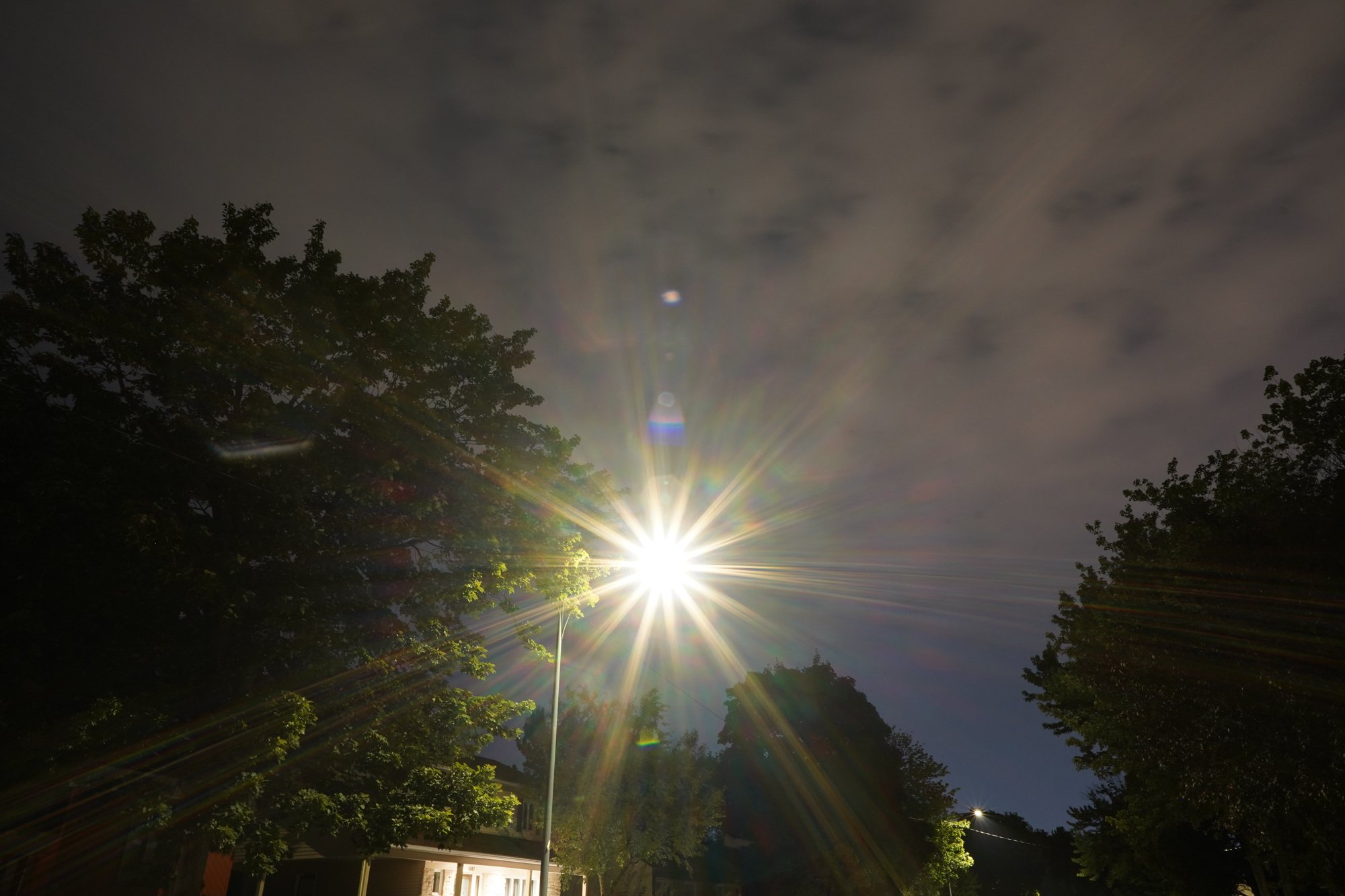 |  |
| F22 | 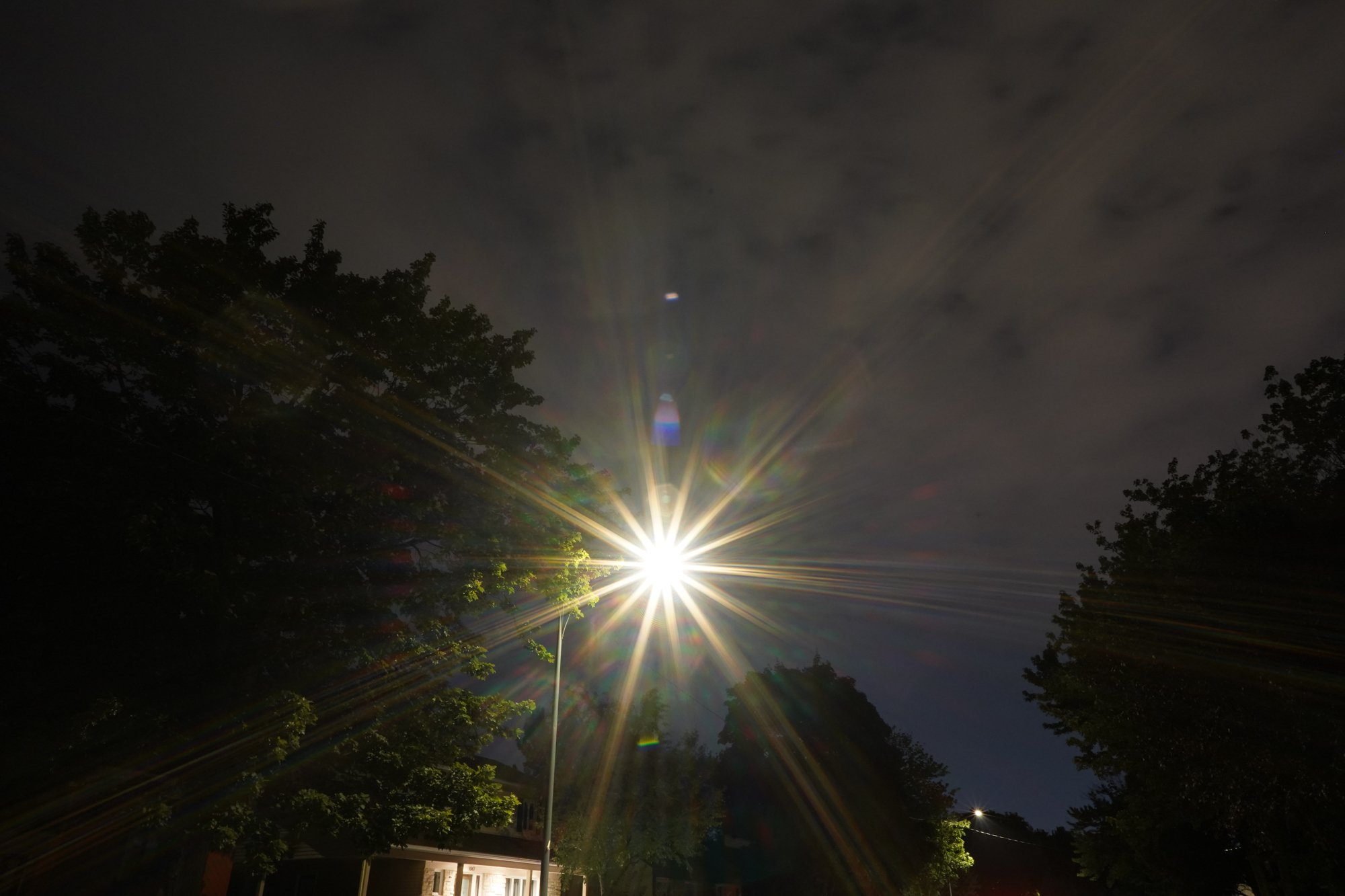 | 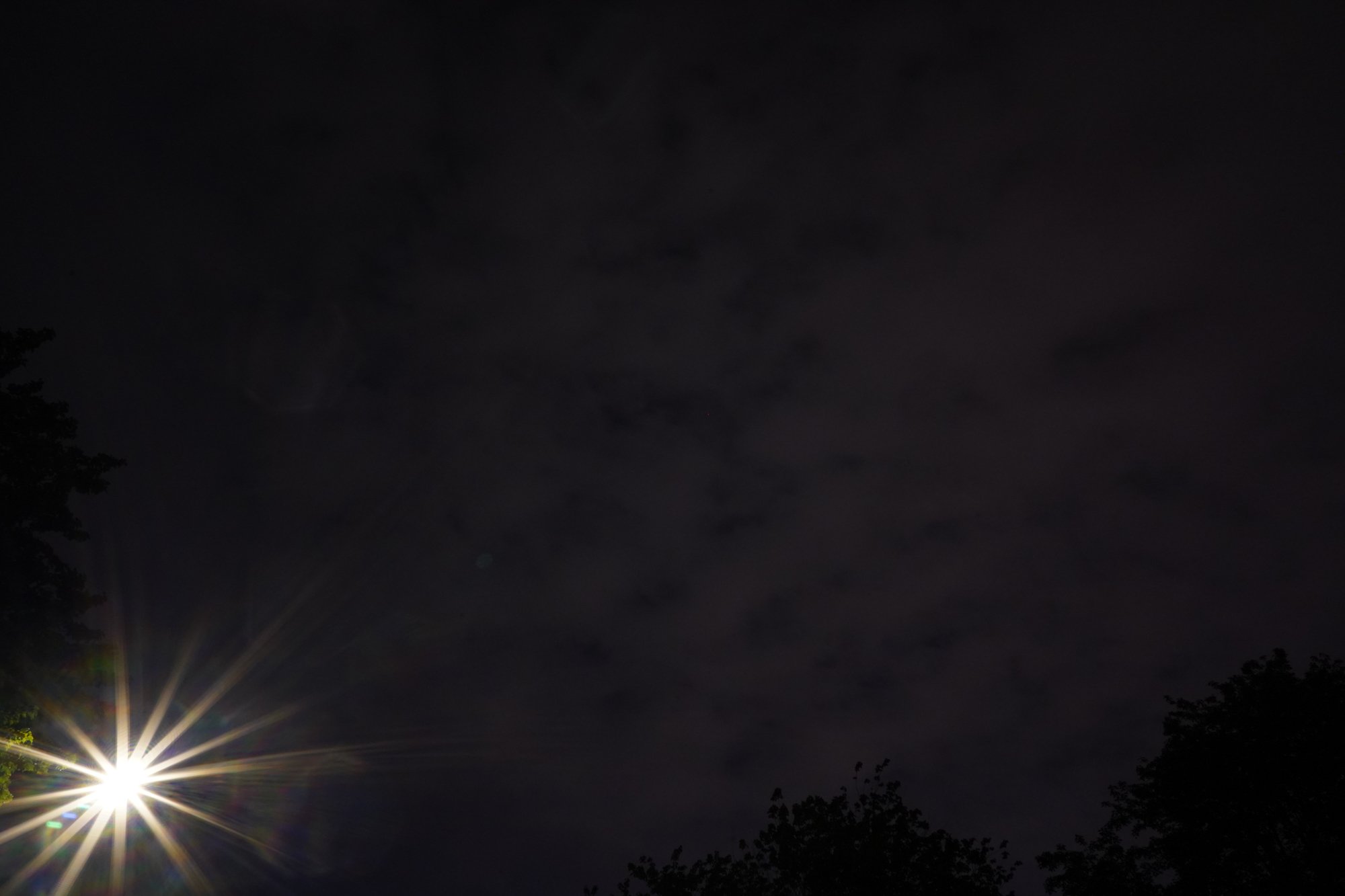 |
In the center, there are ghosts right above the light source at wider apertures, becoming more numerous and more visible as the aperture closes. Thankfully, there is no hint of flare or decrease in contrast.
With the light in the corner, results are impressive, and much better than expected. There are some ghosts close to the light source, but none elsewhere. We typically observe a row of ghosts on the diagonal with this kind of test, and none are visible here. Stellar results.
Chromatic aberration
Chromatic aberration (CA) occurs because different colours do not always have the same focal point. With modern lenses designs, which are better corrected than vintage designs, this is more likely to occur in out-of-focus areas. CA effects are more visible near fast transitions from bright to dark areas.
Most modern cameras have built-in tools to remove CA. Digital manipulations can have an impact on other aspects of an image, thus it is useful to know how a lens performs when those automatic corrections are disabled.
Our test sets up the camera at 45° and focuses on the center of the frame, with targets at the center, top and bottom. Images are captured at varying apertures.
| Top | Center | Bottom | |
| F2.8 |  |  | 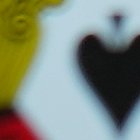 |
| F4 | 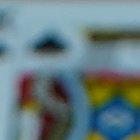 |  | 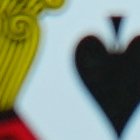 |
| F5.6 | 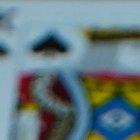 | 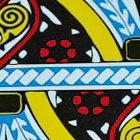 |  |
| F8 |  |  |  |
| F11 |  |  |  |
| F16 |  |  |  |
| F22 |  |  |  |
The center is devoid of any chromatic aberration effects. However, both the top and bottom show clear CA at all apertures. It exhibits as green and red edges on sharp transitions. Automatic in-camera corrections will take care of it but it is a bit disappointing to see Sony’s designers rely on these tools instead of creating a robust design to begin with.
Purple fringing
There were no occurrences of purple fringing in our tests with the Sony 24mm.
Distortion
Distortion refers to a lens’s ability to represent straight lines as straight lines… Wide angle lenses frequently generate barrel distortion, while longer focal lengths are more likely to cause pincushion distortion.
The Sony 24mm is a wide lens, but not extreme. As such, some barrel distortion is to be expected, but we do not expect to see distortion get out of control.
We use a standard test pattern of straight lines and test at 24mm.
| Uncorrected |  |
| Corrected |  |
The Sony 24mm shows well-controlled distortion when left uncorrected. We measured 0.8% of pincushion distortion.
This is better than many wide angle lenses, which often generate more distortion. It is interesting that what effect there is is pincushion, instead of barrel.
Sample images
Here is a gallery of samples images captured with the Tamron 24mm. You can click on individual images for a larger view.

A7C, F2.8, 30s, ISO 640 
A7C, F3.2, 1/3200s, ISO 400 
A7C, F3.5, 1/2500s, ISO 400 
A7C, F5.6, 1/2000s, ISO 200 
A7C, F9, 1/4000s, ISO 200 
A7C, F5.6, 1/1600s, ISO 400 
A7C, F5, 1/1600s, ISO 200 
A7C, F7.1, 1/4000s, ISO 200 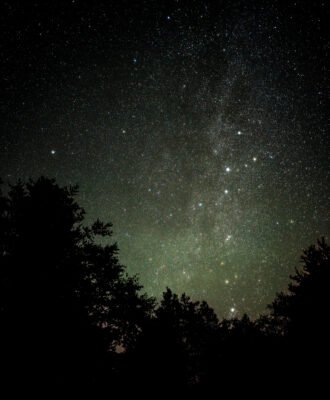
A7C, F2.8, 30s, ISO 640 
A7C, F5, 1/2500s, ISO 200 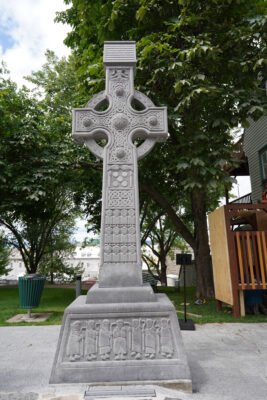
A7C, F5.6, 1/1000s, ISO 400 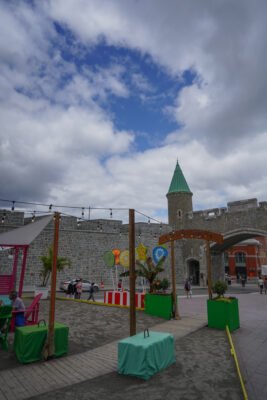
A7C, F8, 1/4000s, ISO 400 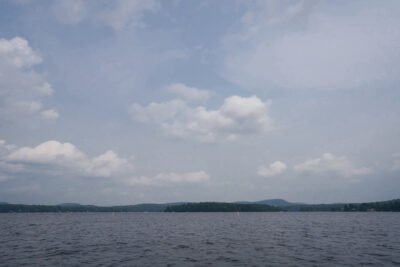
A7C, F14, 1/1250s, ISO 400 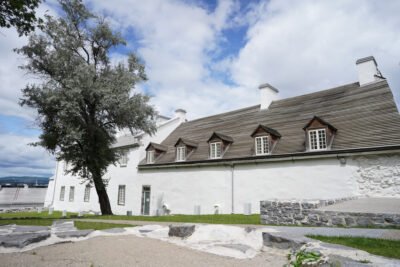
A7C, F5.6, 1/4000s, ISO 400 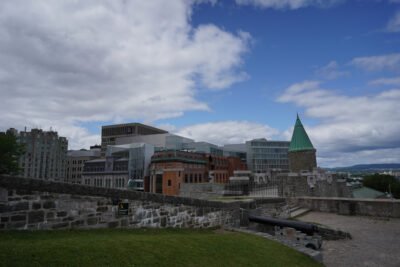
A7C, F7.1, 1/4000s, ISO 400 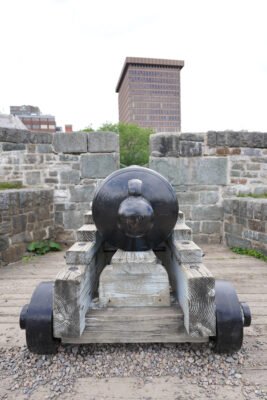
A7C, F3.5, 1/1600s, ISO 400 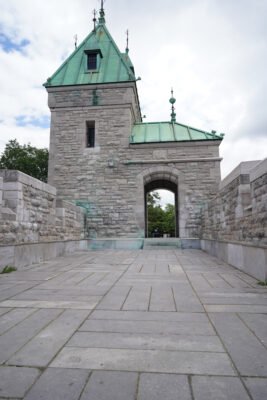
A7C, F7.1, 1/1000s, ISO 400 
A7C, F7.1, 1/4000s, ISO 400 
A7C, F5.6, 1/2000s, ISO 200 
A7C, F7.1, 1/1600s, ISO 400 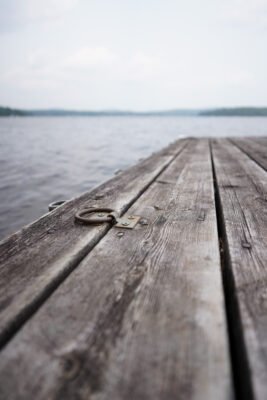
A7C, F3.5, 1/4000s, ISO 400 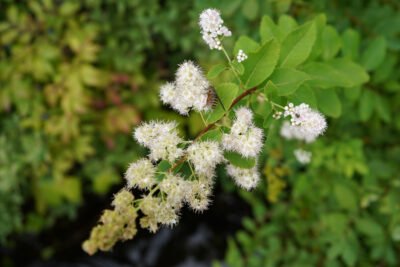
A7C, F4.5, 1/1000s, ISO 400
Conclusion
With this review, we begin our exploration of Sony’s trio of compact, metal and weather-resistant primes.
The 24mm F2.8 surprised many people, in part because Sony already propose another 24mm with a faster aperture (the 24mm F1.4 GM). The new lens, with a slower F2.8 aperture (and bearing the “G” label instead of the higher-end “GM”) is much less expensive, much lighter and compact, and shares a similar size with its 40mm and 50mm siblings.
Thus, it doesn’t make much sense to compare the 24mm G to the GM: they cater to different use cases. The new Sony should instead be compared with similar lenses from third-party manufacturers. We have not tested proposals by Sigma and Rokinon, but we did test the Tamron 20mm and 24mm, direct competitors of the Sony.
Build quality on the Sony is excellent. The metal housing feels utilitarian instead of jewel-like, and gives a sense of ruggedness. The small size of the lens must be emphasized.
There are a lot of buttons and switches for such a small lens. They are welcome and useful. The AF / MF switch is sitting a bit low for easy access. One thing to mention is that the aperture ring does not lock into place and often moves when handling the lens.
Optical performances are very good but, frankly, a bit underwhelming given the lens’ price point.
Center sharpness is excellent, but edges and corners are never as good.
Distortion control is impressive, reaching no more than 0.8%.
Chromatic aberration is present at all apertures. The designers know this, and force automatic corrections in JPEG mode. The same can be said about vignetting: it is strong at all apertures, and never disappears. The Sony 24mm does worse than many of its competitors in this.
Bokeh and out-of-focus rendering is quite good with mostly gradual transitions. Highlights are nicely rounded wide open but, despite the curved aperture blades, take a more defined shape even at F4.
Flare and ghosting are a strong point. Particularly with light sources near the corners, the lens does admirably.
Starbursts are nothing special even at small apertures, the rays are diffuse and diverging..
Autofocus is stellar. Silent, very fast (hard to measure in good light), dependable, it certainly is a perk of this lens.
In summary, the Sony 24mm F2.8 G is a lens with many qualities, but some flaws which make it hard to recommend over some of it competitors. In particular, the Tamron 24mm offers a compelling alternative at a fraction of the Sony’s price.
The Sony has many things gong for it: very compact body, light weight (especially given the metal housing), blazing fast AF, very good center sharpness, good control of flare. We lament that the designers relied too much upon in-camera corrections for many optical aspects. On APS-C, the story will be different, as sharpness and distortion will benefit from the center crop.
The best choice, as often, will be dictated by budget vs desired features. the Sony lens is not a bad choice, but it isn’t an obvious one either.
Pros
- Light and extremely compact
- Weather resistant
- Several buttons and switches on the lens
- Excellent center sharpness at nearly all apertures
- Blazing fast, silent AF
- Low distortion
- Great control over flare and ghosting
- Good bokeh for a wide angle
Cons
- Strong vignetting when left uncorrected
- Underwhelming sharpness on edges and corners
- Chromatic aberration present at all apertures
- Aperture ring does not lock in place
- Expensive when compared to the competition
Check Price & Buyer Reviews for Sony FE 24mm F2.8 G Lens
At: Amazon | B&H Photo | Wex Photo UK
Before You Go
Do you already own this lens? Are you curious about it? If you do, we’d love to hear your thoughts in the comments below.

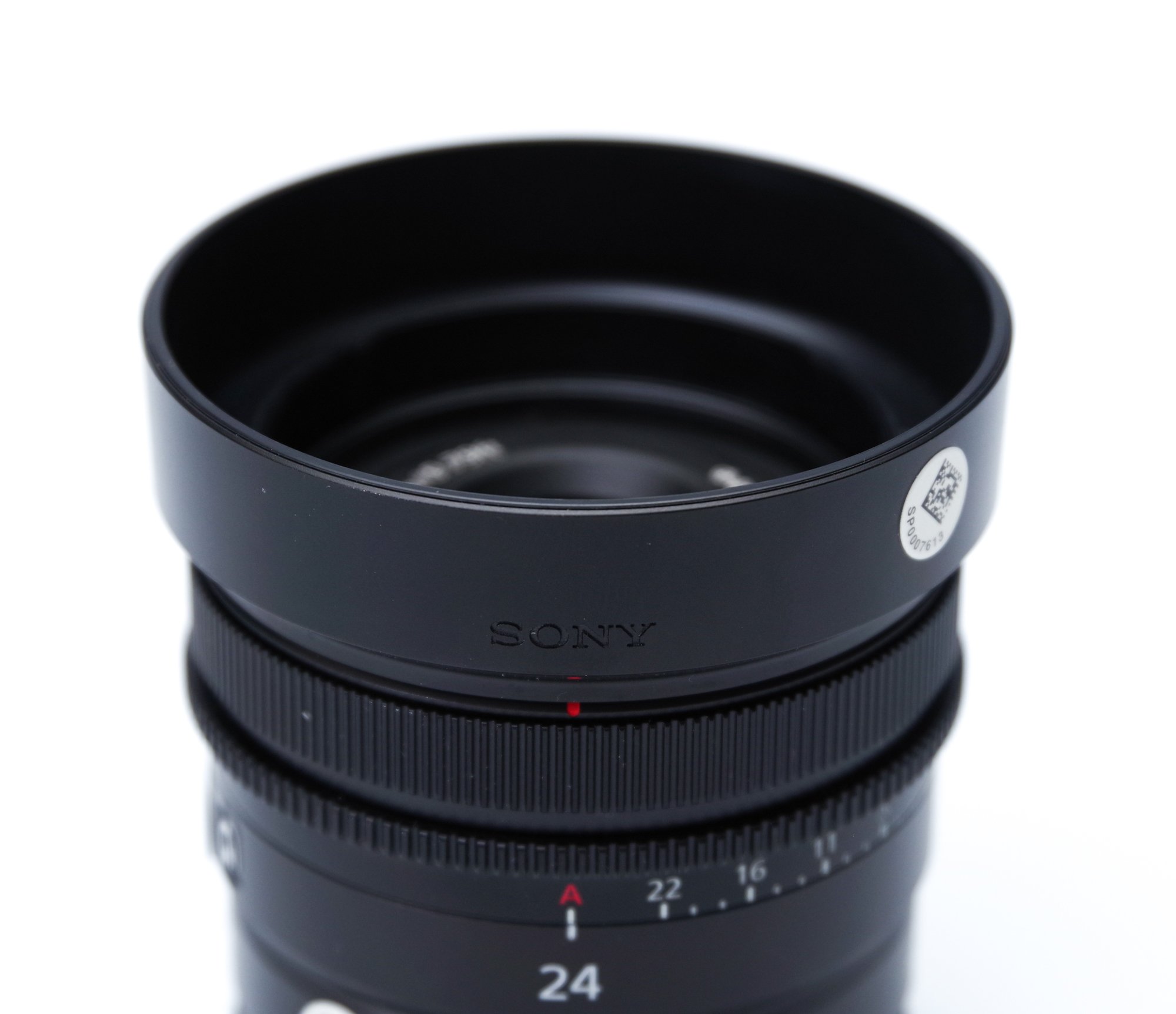
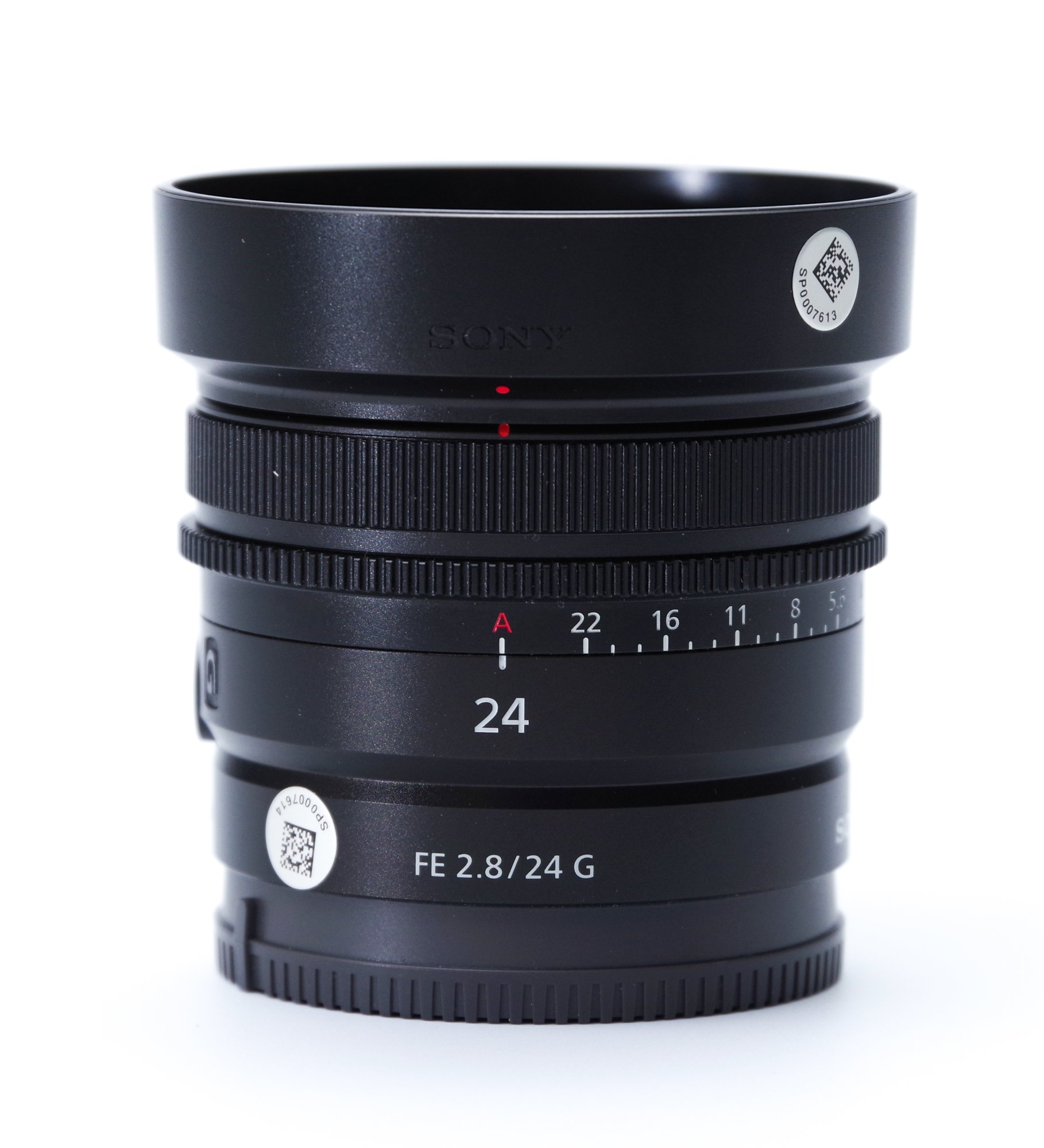

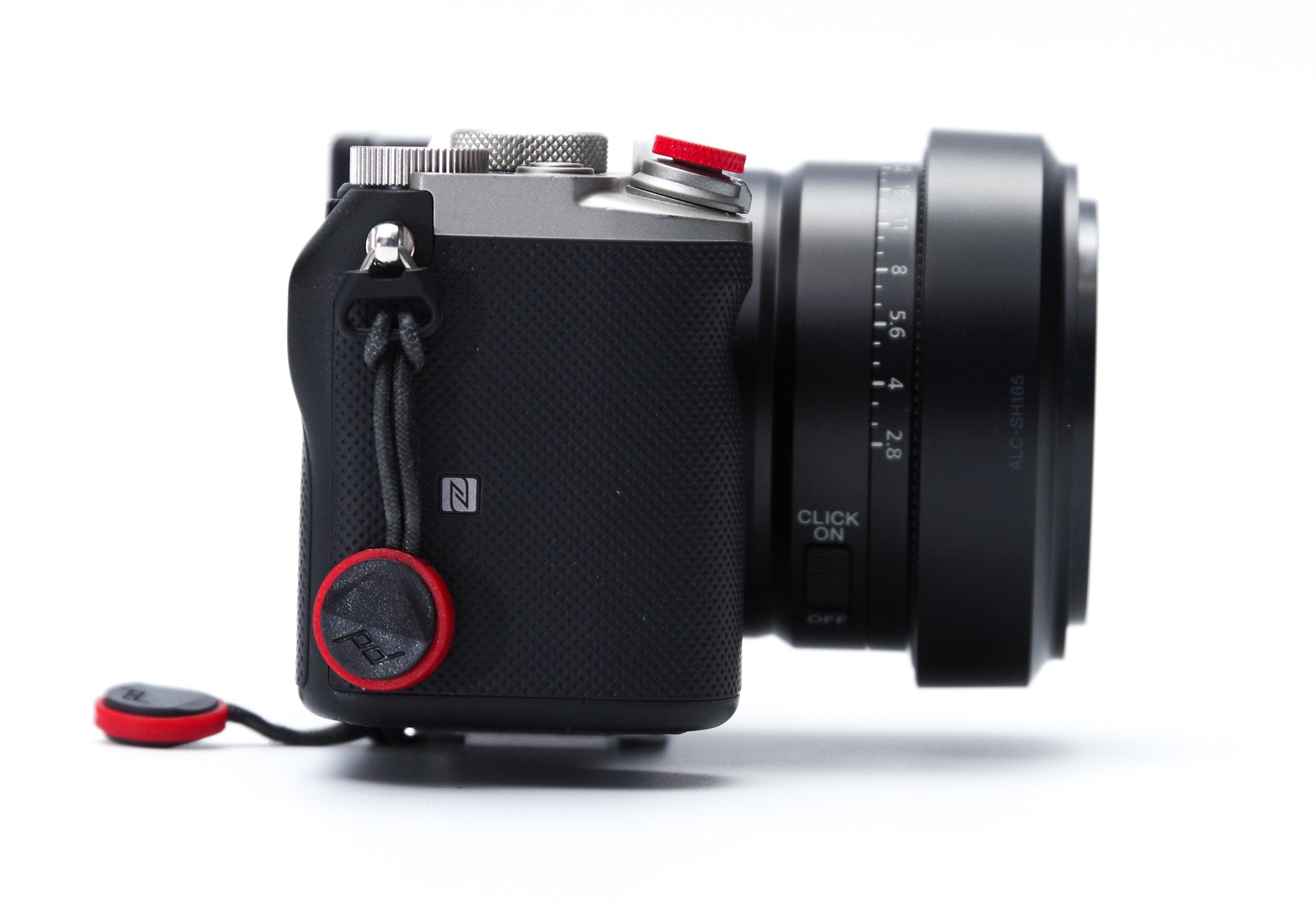
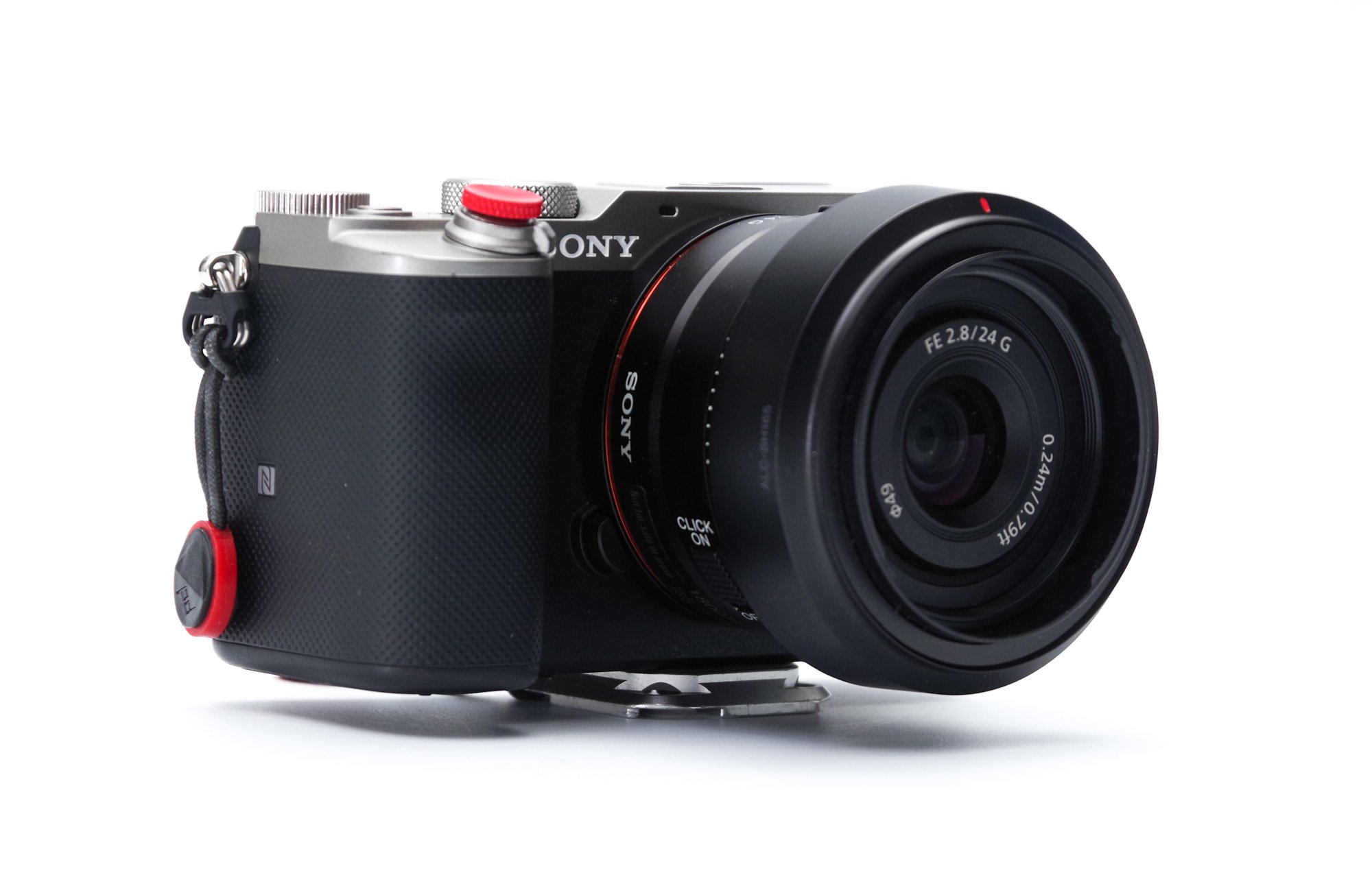








I just bought this lens, I have a trip to Spain next Saturday and I hope it doesn’t disappoint me, seeing your comments and the sample photos I think I’ll take good photos. Do your sample photos have any post-production? like lightroom?
Thanks for doing these reviews.
Hello Fernando,
the samples are JPEGs, so inevitably they have some processing applied, even if it’s only in-camera. In the present case, some of these images have had some adjustments in Lightroom, in all cases it is limited to light touches such as exposure, cropping or white balance. The idea is to show the possibilities of the lens, not demonstrate skills in Lightroom! 🙂
Thanks for your encouragement, I’m glad you find the reviews useful!